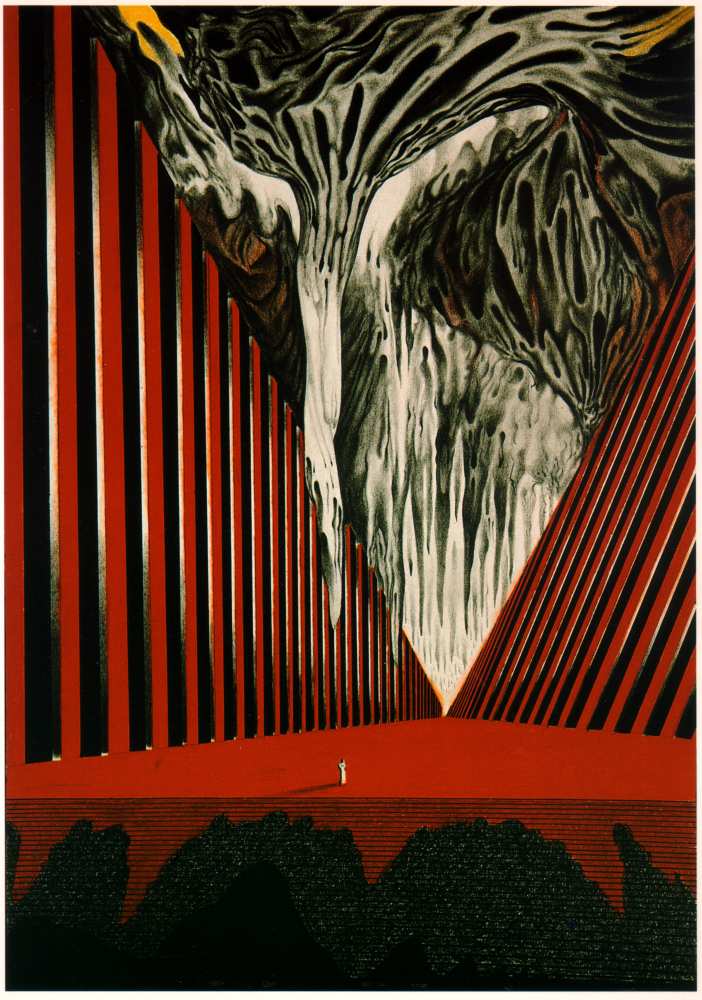The theorem on the coincidence of simplicial and cellular homology
No. 106, 1973
(Topology, homology theory)
India ink and color pencil on paper, 30x43 cm.
In the darkness of night, undulating forms, seeming spirits, move elegantly through a space defined by rows of tall, hard-edged columns at various angles. Below, a figure remains, contemplating the spirits above. Indeed, this is a topological space, and if it is triangulated, or represented as a simplicial complex, then one can compute the simplicial homology groups. In this picture, we see a representation of an idea—to replace a simplicial homology with a cellular homology. It turns out that the idea of cellular homology is already imbedded in simplicial homology, since simplexes with the same numerical coefficients can be consolidated into larger blocks, which can in turn be made into cells. The process is simple enough in theory, though the computations are very complicated. To represent the most interesting spaces as simplicial complexes, we often need a terribly large number of simplexes. The more complicated the space, the more simplexes are needed. So in general, we might say that simplicial homology groups are easy to define, but hard to compute. In contrast, the cellular homology groups are hard to define, but easy to compute. In fact, for so-called nice spaces, one remarkable theorem points out that simplicial and cellular homology groups are isomorphic.
